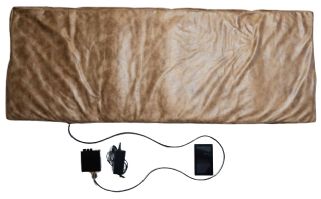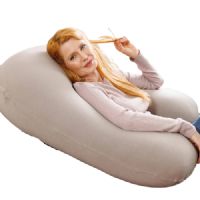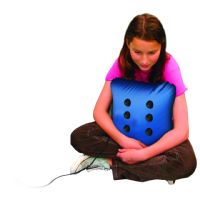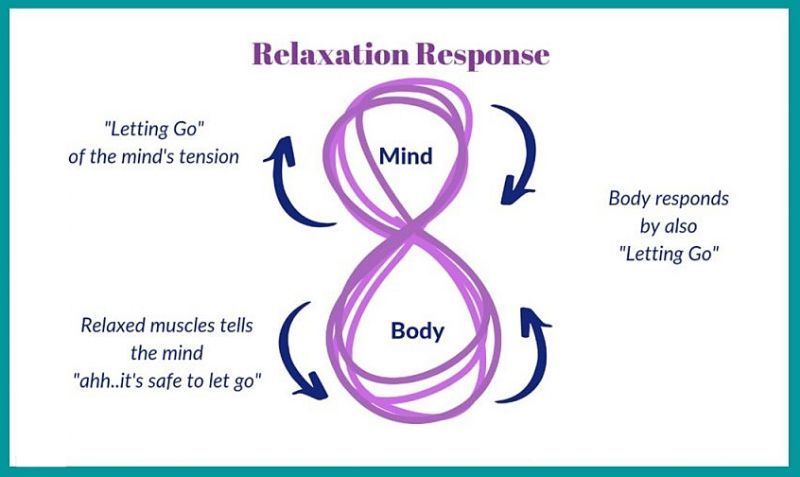 Written by Dr. Eric Wood, ND, MA
Written by Dr. Eric Wood, ND, MA
According to the CDC, 860.4 million drugs have been prescribed in the United States with analgesics and antidepressants ranked at the top. With such inflated numbers, it is no wonder so many individuals are turning towards more holistic therapies that provide a non-prescription alternative treatment. Vibroacoustic therapy is one such intervention that uses low-frequency Vibroacoustic Therapy Products to cause therapeutic relaxation and healing.
Vibroacoustic therapy is a treatment that combines sound therapy and vibration therapy for therapeutic purposes. It is used to provide healing benefits for a wide array of mental and physical conditions.
.png)
Vibroacoustic therapy works through specialized speakers called transducers, which are incorporated into a variety of furniture (e.g., mats and pillows). As the transducers receive sound via music, the energy is translated into vibration, which is felt by the human body. The resulting vibratory input is a form of tactile stimulation that travels up the spinal cord and into the brain. As the signaling is received, several reactions can occur including a release of mood-boosting neurotransmitters, relaxation of muscle tension, and widening of blood vessels and lymphatic pathways. The elements of sound and vibration combine to form a unique and potent form of holistic treatment which contribute to relaxation and healing.

Various forms of vibroacoustic therapy equipment exist providing users with optionality to suit their specific needs and desired use.
Vibroacoustic tables and mats allow the user to fully relax in a supine position. Mats offer portability and adaptability to meet changing client needs.
 | Vibroacoustic Therapy Vibrating Mat by SoundWell View Product |
While generally less portable, bed, chair, and bean bag options allow for enhanced sleep, rest, and relaxation.
 | TheSoundWell Yogibo Sonic Vibration Back / Neck / Shoulders Support View Product |
Cushions and pillows are great options for users needing flexible vibroacoustic therapy on the go. They can be applied alone or in conjunction with another vibroacoustic device.
 | Resonance Vibroacoustic Therapy Cushion View Product |
Vibroacoustic therapy can cause several therapeutic benefits leading to both psychological and physiological change. Benefits include but are not limited to:
Anxiety management
Blood pressure reduction
Improved circulation
Improved quality of sleep
Relaxation
Tapping and vibration are common therapeutic interventions used to facilitate sensory awareness and muscle recruitment. By providing vibratory input, this treatment can improve low arousal, poor posture, and low tone, which promotes better body awareness and motor outputs.
Vibroacoustic therapy also affects restlessness and agitation. By targeting the proprioceptive system, vibration effectively provides the body with a distracting input that overrides restless or agitated feelings.
Through a combination of sound and vibration, vibroacoustic therapy promotes relaxation, stress relief, and a reduction in blood pressure. It opposes the fight or flight response promoting dilation of the blood vessels and opening of the lymphatic system improving circulation.
Soothing vibrations combined with calming sounds can have profound effects on relaxation and dopamine release, a neurotransmitter important in pain regulation. By improving dopamine release, vibroacoustic therapy can therefore contribute to a reduction in headache symptoms and pain-associated nausea.
Similar to the way electrical stimulation works in physical therapy, vibroacoustic therapy provides the brain with an input other than pain which effectively blocks the pain signals from being interpreted by the brain. With less threatening input, the muscles can relax and pain levels reduce.
Your body is a connected electrical system involving neural signaling leading to muscle activation and movement. Through either isolated or gross body vibration, the brain can become better in tune with different parts of the body and improve the overall mind-body connection via vibroacoustic therapy application.
Mental illness often results from an imbalance of chemical hormones within the brain. In combination with lifestyle management and medical management, vibroacoustic therapy can provide a calming and relaxing effect.. From depression and anxiety to PTSD, supplying a stimulus that reduces stress hormones in the system and gets someone out of ‘fight or flight mode’ can improve clarity and mood.
.jpg)
Individuals with special needs often experience restlessness, sensory impairment, and anxiety. Through the application of vibroacoustic therapy, users experience a reduction in stress hormone release, a boost in energy and vitality, and an overall improvement in quality of life.
Besides individuals with special needs, vibroacoustic therapy can also provide seniors significant relief from common conditions including restlessness, agitation, stress, and high blood pressure.
Finally, by inducing a relaxed state, vibroacoustic therapy benefits anyone in need of physical and mental rest. Whether you are experiencing increased stress, elevated blood pressure, chronic headaches, nausea, chronic pain, muscle tension, or a mental health condition, vibroacoustic therapy products may be appropriate for you. Start feeling like your best self with natural and safe treatment.
.jpg)
Vibroacoustic therapy is inappropriate for individuals with pacemakers, bleeding disorders, severe hypotension, DVT, or recent surgery. If you are unsure, speak with your healthcare provider before initiating treatment.
Vibroacoustic therapy was developed by a Norwegian man named Olav Skille in 1968. He extensively studied human musical behavior and incorporated his findings to produce vibroacoustic therapy. Since the inception of the therapy, it has been performed around the world to treat many physiological and psychological conditions.
The relaxation response is a deep state of rest or relaxation whereby the body experiences a reduction in heart rate, blood pressure, and cortisol release. It is essentially the body’s “off switch” to stress and produces several physical and emotional benefits. This is the primary outcome of vibroacoustic therapy.

Whether you’re a parent looking to address your child’s sensory condition, or an adult battling chronic pain and depression, vibroacoustic therapy provides soothing inputs to relax, restore and reset physical and mental health.
If you or someone you know is interested in vibroacoustic therapy, check out our comprehensive array of vibroacoustic products.
To learn more, check out all of our Vibration And Vibroacoustic Therapy articles on our blog. While you’re there, feel free to browse through similar blogs, articles, and buying guides at Caregiver University, a curated collection of expert-written content to help caregivers make better decisions.

Dr. Wood is a licensed naturopathic doctor in Washington D.C. and founder of Visionary Health. A graduate of the Canadian College of Naturopathic Medicine, Dr. Wood is a professor at John Patrick University in the Integrative and Functional Medicine Department as well as an adjunct professor at the American College of Healthcare Sciences in Holistic Nutrition. He began his career as a specialty physician for two leading supplement US companies, Neuroscience Inc. and Life Extension. Over his fifteen-year career in integrative and holistic medicine, he has worked in diverse capacities including as an educator; writer; medical advisor, consultant and formulator for supplement companies and treatment centers in the US and the EU; public speaker; and clinician. He has long been a practicing advocate of lifestyle medicine, fitness and mind body medicine approaches initially spurred by aging family members not getting help from traditional medicine and is passionate about innovating and bringing natural and integrative medicine to the masses!